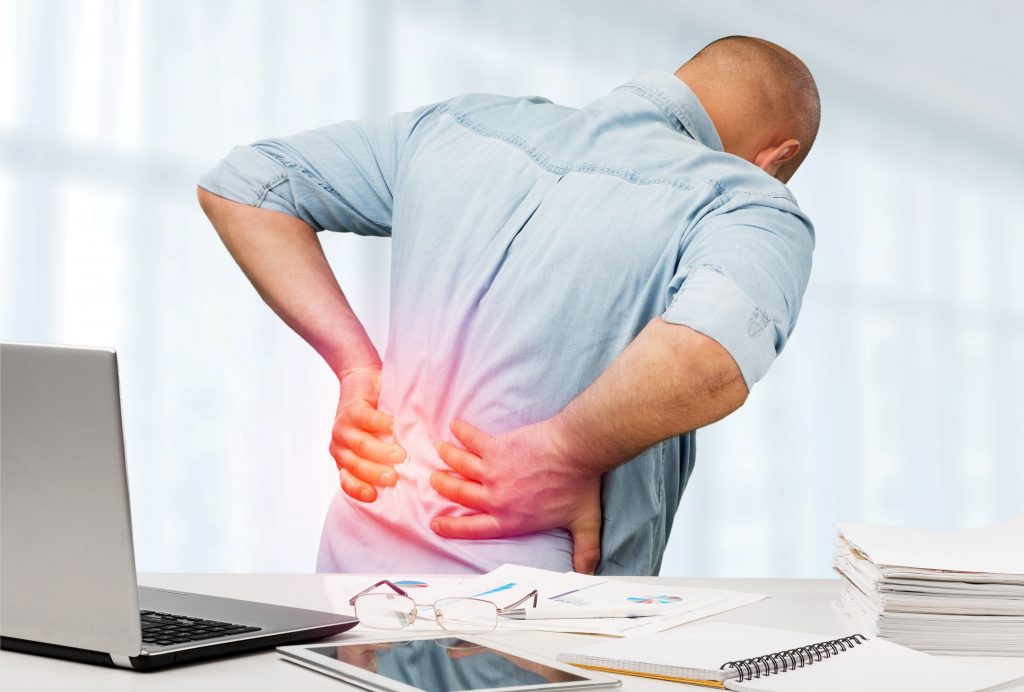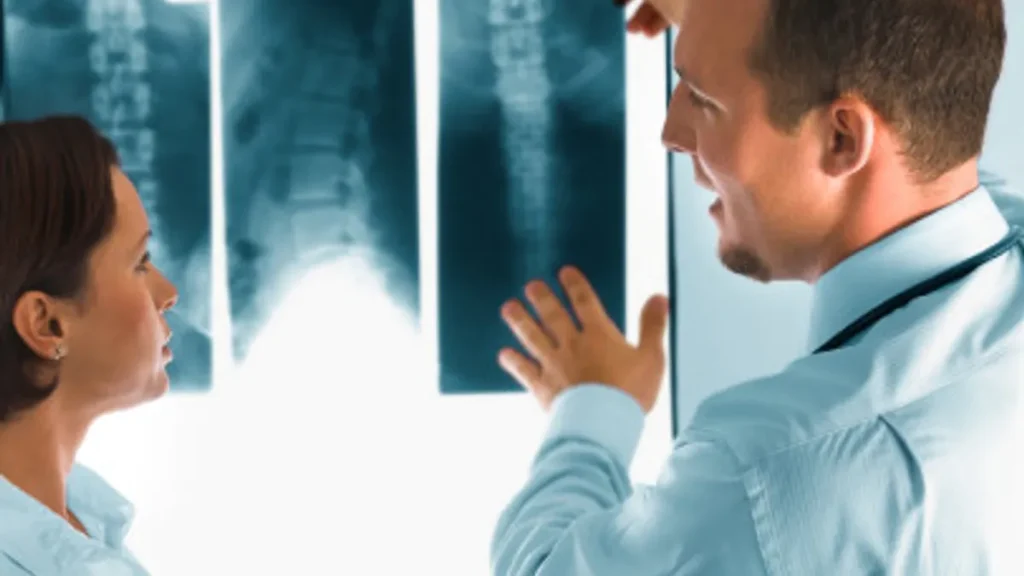Chronic back pain is an incredibly prevalent and burdensome condition that afflicts millions of individuals worldwide. It can affect your ability to work or participate in the things you love. If you find yourself grappling with the relentless discomfort of pain, you’re certainly not alone.
What is Chronic Back Pain?
Chronic back pain often extends beyond the physical discomfort and can encompass emotional and psychological aspects as well. This long-lasting discomfort is often associated with various underlying factors, which include structural issues in the spine, nerve damage, muscle imbalances, and more.
The distinguishing feature of chronic back pain is its persistence. This pain will be present well beyond the typical healing time for acute injuries. It can also lead to a range of secondary issues, including decreased mobility, reduced quality of life, and a higher risk of developing additional health problems due to inactivity.
Managing chronic back pain can be a challenging and ongoing process. Treatment strategies often involve combinations of interventions like medication, physical therapy, and sometimes even surgical procedures. This type of pain can also be treated with therapies such as chiropractic care, regenerative medicine and acupuncture.

Causes for Chronic Back Pain
One common source is muscle and ligament strain. These injuries occur due to improper use of the back muscles, poor posture, heavy lifting, or repetitive movements. Muscle and ligament strains are particularly common in individuals with physically demanding occupations. Structural issues in the spine, such as herniated discs, spinal stenosis (narrowing of the spinal canal), and degenerative disc disease, can also be a factor.
Nerve compression conditions, like sciatica, can cause persistent pain radiating from the lower back down the leg. Muscle imbalances, a sedentary lifestyle, obesity, and smoking can also increase your risk of developing a back problem. Traumatic injuries, such as falls, car accidents, or sports-related incidents, can damage the spine or surrounding structures, causing ongoing pain. As individuals age, natural degenerative changes in the spine, such as disc breakdown and bone spurs, can result in back pain.
Given the multitude of potential contributors to chronic back pain, accurate diagnosis by a healthcare professional is essential. This enables the development of an effective treatment plan tailored to the individual’s specific needs, which may involve physical therapy, medication, lifestyle changes, and, in some cases, surgical interventions.
Signs and Symptoms of Chronic Back Pain
Understanding the signs and symptoms of chronic back pain is crucial for timely intervention. Chronic back pain is a multifaceted entity, and its manifestations can vary from person to person. Individuals with chronic back pain may encounter the following symptoms:
- Sustained Pain Duration: Persistent pain for three months or more.
- Localization and Radiation: Chronic back pain may manifest as a localized sensation or radiate to adjacent areas.
- Constricted Range of Motion: Causes restrictions on an individual’s range of motion. Activities such as bending, twisting, or lifting, may become more difficult.
- Stiffness and Muscle Tension: Muscles surrounding the spine may become tense and rigid, contributing to discomfort and further limiting movement.
- Sleep Disturbances: The incessant pain associated can disrupt sleep patterns, leading to insomnia and sleep deprivation.
- Impaired Daily Activities: The cumulative impact of back pain can make even the simplest of daily activities, such as walking, sitting, or standing, more difficult or painful.
- Psychological and Emotional Effects: Persistent pain can lead to heightened levels of stress, anxiety, and depression, further complicating the overall management of the condition.
It’s important to note that chronic back pain is a highly individualized experience, and not all individuals will exhibit every symptom listed here. . Seeking professional evaluation and guidance is essential to accurately diagnose the condition and develop a tailored treatment plan that addresses your specific needs and challenges.
Diagnosing Chronic Back Pain
If your pain isn’t getting better, it’s important to seek professional medical evaluation. Healthcare providers often employ a battery of diagnostic tests and advanced imaging modalities, such as X-rays, MRIs, or CT scans, to pinpoint the precise etiology and severity of your condition. Remember that obtaining an accurate diagnosis constitutes the foundational cornerstone upon which effective treatment rests.

6 Ways to Treat Chronic Back Pain
Regenerative Medicine:
In the quest to find relief from back pain, a rising number of sufferers are exploring the promising realm of regenerative medicine. This innovative approach encompasses treatments such as Stem Cell Therapy and Platelet-Rich Plasma (PRP) injections, aimed at stimulating the body’s innate healing mechanisms. These cutting-edge treatments exhibit the potential to not only mitigate pain but also foster tissue repair, offering renewed hope to chronic back pain sufferers.
- Stem Cell Therapy (MFAT): Stem cells have the remarkable capacity to transform into various cell types, including those needed for tissue repair. In the context of back pain, stem cell therapy involves the injection of stem cells, often derived from the patient’s own body, into the affected area. These cells can help regenerate damaged tissue, reduce inflammation, and promote healing. While research is ongoing, many patients have reported significant pain relief and improved function after undergoing stem cell therapy.
- Platelet-Rich Plasma (PRP) Injections: PRP is a concentrated solution of platelets, growth factors, and other bioactive substances derived from the patient’s own blood. When injected into the site of chronic back pain, PRP can stimulate tissue regeneration, reduce inflammation, and accelerate the healing process. PRP injections are considered a safe and minimally invasive treatment option with the potential to provide long-lasting relief.
Chiropractic Care:
Chiropractic care emerges as a compelling and holistic avenue for addressing chronic back pain. This therapeutic discipline involves the expertise of trained chiropractors who utilize spinal adjustments and manipulations to optimize spinal alignment, alleviate pain, and enhance overall musculoskeletal health. Many individuals find solace and relief from chronic back pain through regular chiropractic sessions, often integrated into a multifaceted treatment plan.
- Spinal Adjustments: Chiropractors use precise manual techniques to manipulate the spine’s alignment, aiming to correct misalignments (subluxations) and alleviate pain. These adjustments can improve nerve function, reduce muscle tension, and promote overall spinal health.
- Mobilization Techniques: In addition to spinal adjustments, chiropractors may employ mobilization techniques that involve gentle stretching and movement of the joints and muscles. These techniques can enhance flexibility, reduce stiffness, and improve range of motion in the affected area.
- Comprehensive Assessment: Chiropractors typically conduct a thorough assessment of a patient’s musculoskeletal system, including the spine, to identify the root causes of chronic back pain. This assessment helps tailor treatment plans to address individual needs effectively.
Physical Therapy and Rehabilitation:
The pivotal role of physical therapy in the management of chronic back pain cannot be overstated. Skilled physical therapists collaborate closely with patients, crafting bespoke exercise regimens and techniques that fortify musculature, enhance flexibility, and ameliorate pain, fostering a journey towards improved functionality and well-being.
- Customized Exercise Programs: Physical therapists design exercise programs tailored to the specific needs and limitations of each patient. These exercises focus on strengthening core muscles, improving posture, and enhancing overall spinal stability.
- Manual Therapy Techniques: Physical therapists may employ hands-on manual therapy techniques such as joint mobilization, soft tissue manipulation, and myofascial release to alleviate pain and restore normal movement patterns.
- Education and Ergonomics: Patient education plays a pivotal role in physical therapy. Patients are taught proper body mechanics, ergonomics, and postural awareness to prevent future episodes of back pain.
Complementary Therapies:
Complementary therapies, including massage therapy, acupuncture, and mind-body practices such as yoga and Tai Chi, present viable avenues for relief from chronic back pain. These therapies harness the power of relaxation and tension reduction to ease muscular distress and foster a state of equilibrium and tranquility.
- Massage Therapy: Massage therapy involves the manipulation of soft tissues and muscles to reduce tension, alleviate pain, and improve blood circulation. Various massage techniques, such as Swedish massage, deep tissue massage, and myofascial release, can be tailored to address specific chronic back pain concerns.
- Acupuncture: Acupuncture is an ancient Chinese healing practice that involves the insertion of thin needles into specific points on the body to promote the flow of energy (Qi) and alleviate pain. Many individuals with chronic back pain report significant relief and improved mobility after acupuncture sessions.
- Yoga and Tai Chi: Mind-body practices like yoga and Tai Chi emphasize gentle movements, stretches, and mindfulness. These practices can improve flexibility, strength, and balance while reducing stress and tension. Regular participation in yoga or Tai Chi classes can be an effective way to manage this pain.
Can Chronic Back Pain Ever Go Away?
While chronic back pain may not always be eradicated entirely, proper care can significantly diminish its intensity. It is important to emphasize that chronic back pain management is often a multifaceted and ongoing process. The goal is not just to alleviate pain but also to improve functionality and quality of life. Many individuals with chronic back pain can experience periods of relief and increased mobility with the right approach to treatment and self-care.

In summary, chronic back pain is a complex and challenging condition that requires a comprehensive approach to treatment. From regenerative medicine and chiropractic care to complementary therapies, there are numerous avenues to explore in the quest for relief. Surgical options, while reserved as a last resort, can provide significant benefits for select patients. The key is to work closely with healthcare professionals to develop a personalized treatment plan that addresses the specific underlying causes of your chronic back pain and helps you regain your comfort and mobility. Remember, you don’t have to face chronic back pain alone, and there are effective solutions available to improve your quality of life.
________________________________________________________________________________________________________________
References
Chenot JF, Greitemann B, Kladny B, Petzke F, Pfingsten M, Schorr SG. Non-Specific Low Back Pain. Dtsch Arztebl Int. 2017 Dec 25;114(51-52):883-890. doi: 10.3238/arztebl.2017.0883. PMID: 29321099; PMCID: PMC5769319.
George SZ, Fritz JM, Silfies SP, Schneider MJ, Beneciuk JM, Lentz TA, Gilliam JR, Hendren S, Norman KS. Interventions for the Management of Acute and Chronic Low Back Pain: Revision 2021. J Orthop Sports Phys Ther. 2021 Nov;51(11):CPG1-CPG60. doi: 10.2519/jospt.2021.0304. PMID: 34719942; PMCID: PMC10508241.
Herman PM, Edgington SE, Hurwitz EL, Coulter ID. Predictors of visit frequency for patients using ongoing chiropractic care for chronic low back and chronic neck pain; analysis of observational data. BMC Musculoskelet Disord. 2020 May 13;21(1):298. doi: 10.1186/s12891-020-03330-1. PMID: 32404152; PMCID: PMC7222295.